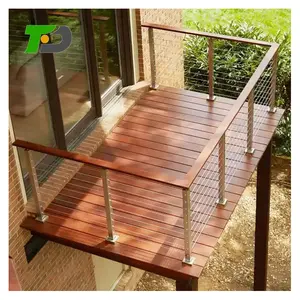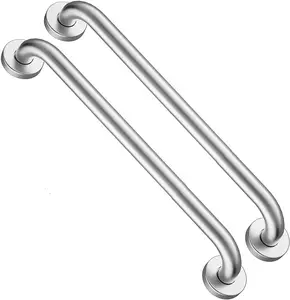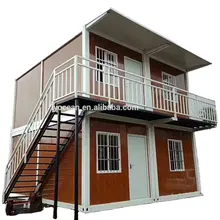Introduction
Choosing the right stair railing can be challenging due to the plethora of options available. However, metal railings stand out for their perfect blend of safety and style. This article delves into the significance of stair railings, the variety of materials available, and the reasons behind the popularity of metal railings. We will explore the types of metal used, their aesthetic appeal, safety features, and the maintenance and durability of metal railings. Join us as we delve into the world of metal railings for stairs, a choice that seamlessly combines functionality with aesthetics.
The Importance of Stair Railings
Often overlooked, handrails play a crucial role in ensuring safety. They provide sturdy support for people ascending or descending stairs, preventing falls and helping maintain balance. This feature is particularly beneficial for young children, senior citizens, and individuals with mobility issues. Handrails also offer peace of mind to those with conditions affecting their mobility, providing a secure grip that boosts their confidence to navigate stairs or ramps independently. In adverse weather conditions, handrails can prevent slips and falls on wet surfaces, ensuring safe passage.
Understanding Different Railing Materials
Several materials are available for stair railings. Steel is a heavy-duty metal, offering superior strength but lacks versatility and is difficult to install. Wood railings provide a rustic look but require high maintenance and are not ideal for humid climates. Vinyl railings, made of Polyvinyl Chloride (PVC), are light and affordable but may not withstand extreme temperature fluctuations. Aluminum railings are lightweight, durable, and weather-resistant, making them an ideal low maintenance choice.
Why Choose Metal for Stair Railings
Metal railings have been a popular choice for staircases for centuries, offering a sturdy and reliable barrier that complements a wide range of architectural styles. They can be created using a variety of materials, including stainless steel, wrought iron, steel, and aluminum. These railings offer a versatile and durable solution for interior and exterior spaces. Overall, metal railings are a versatile and durable option for staircases, offering a range of styles and designs to fit any home or building. They provide low maintenance and value, making them a wise investment for homeowners and property managers alike.
Types of Metal Used in Stair Railings
Metal stair railings come in various types, each offering unique aesthetics and benefits. Stainless steel railings are modern, corrosion-resistant, and match other stainless-steel appliances. Aluminum railings are affordable, rust-resistant, and lightweight, making them suitable for both indoor and outdoor use. Brass railings, made from copper and zinc, offer a range of colors and a classic look. Copper railings provide a warm appearance and develop a protective green patina over time. Wrought iron railings are strong, durable, and can incorporate intricate designs, but they require more care to prevent rust.
The Aesthetic Appeal of Metal Railings
Form and function meet harmoniously with metal railings. Decorative and functional for both interior and exterior applications, these patterned panels work beautifully for stairways, defining spaces with distinctive, eye-catching designs. Whether it's a signature pattern or a custom motif, metal railings add a unique touch to any home. The pattern is a significant element that brings cohesion to our homes and never fails to impress.
Safety Features of Metal Railings
When installing a metal railing on a property, the top priority is safety. According to the International Residential Code (IRC), guardrails must be installed on any walking surface above 30 inches and must be at least 36 inches in height. They cannot have any openings large enough for a 4-inch diameter sphere to pass through. In workplaces, metal railings ensure safety in raised areas such as platforms and walkways, abiding by Occupational Safety and Health Administration (OSHA) standards. The railing must withstand at least 200 pounds of force applied in a downward or outward direction.
Maintenance and Durability of Metal Railings
Metal railings, such as steel and aluminum, are a durable and low-maintenance option for stair railings. They are resistant to insect and moisture damage, and their upkeep is straightforward. Unlike wood, they don't require harsh chemicals for maintenance. A simple wash with soap and warm water is enough to keep them in good condition. Furthermore, their weather-resistant coatings enhance durability and reduce the need for labor-intensive upkeep. These qualities make metal railings a practical choice for stairs, ensuring longevity and aesthetic appeal with minimal maintenance.
Conclusion
In conclusion, metal railings for stairs offer a harmonious blend of safety, durability, and aesthetic appeal. They cater to a wide range of architectural styles and are versatile enough to fit any home or building. With their low maintenance requirements and long-lasting durability, they present a wise investment for homeowners and property managers. Whether it's the modern appeal of stainless steel, the classic look of brass, or the intricate designs of wrought iron, there's a metal railing to suit every taste and need. As we navigate our built environments, let's not overlook the importance of these silent guardians that guide our steps, ensuring our safety while adding a touch of elegance to our surroundings.











































 浙公网安备 33010002000092号
浙公网安备 33010002000092号 浙B2-20120091-4
浙B2-20120091-4